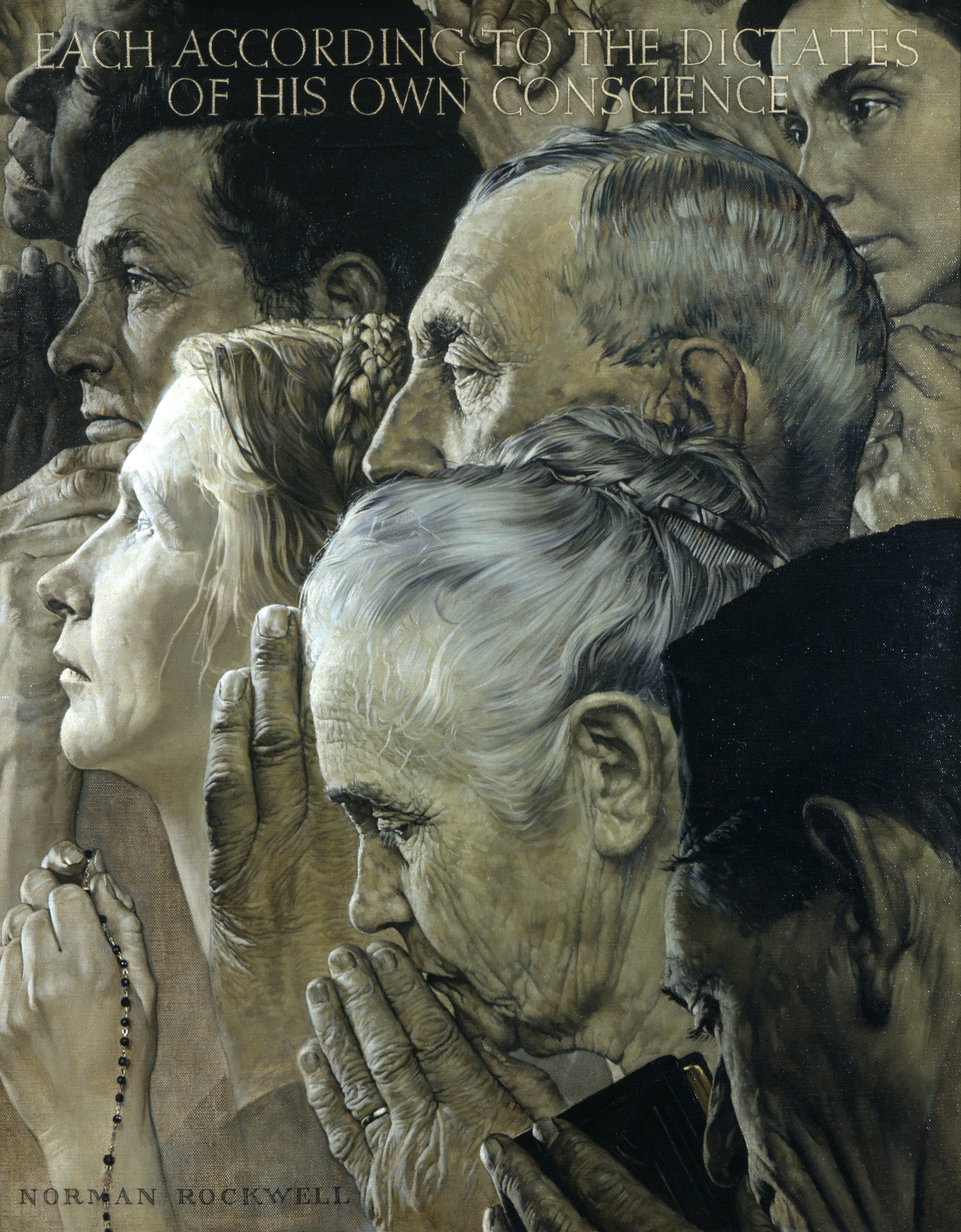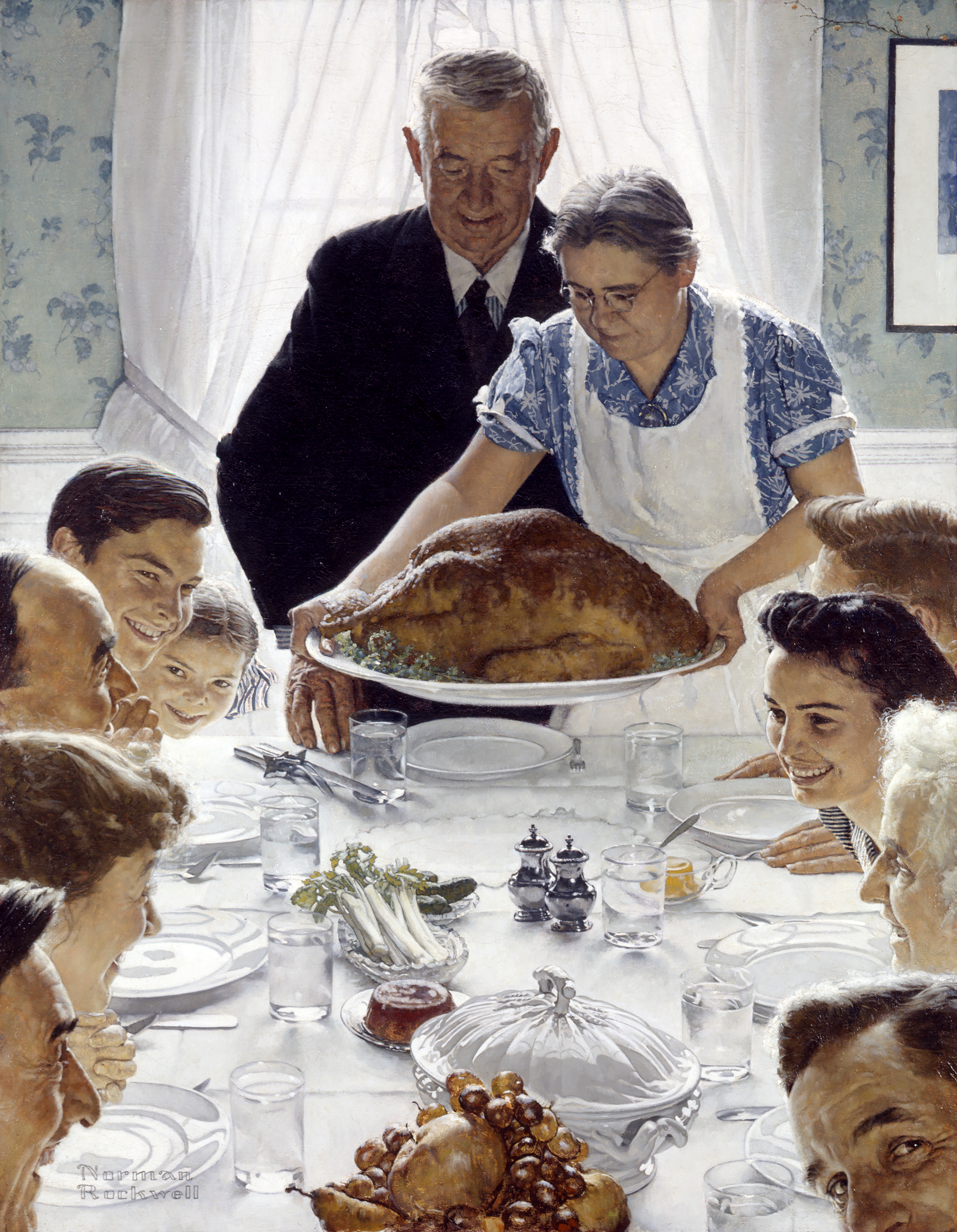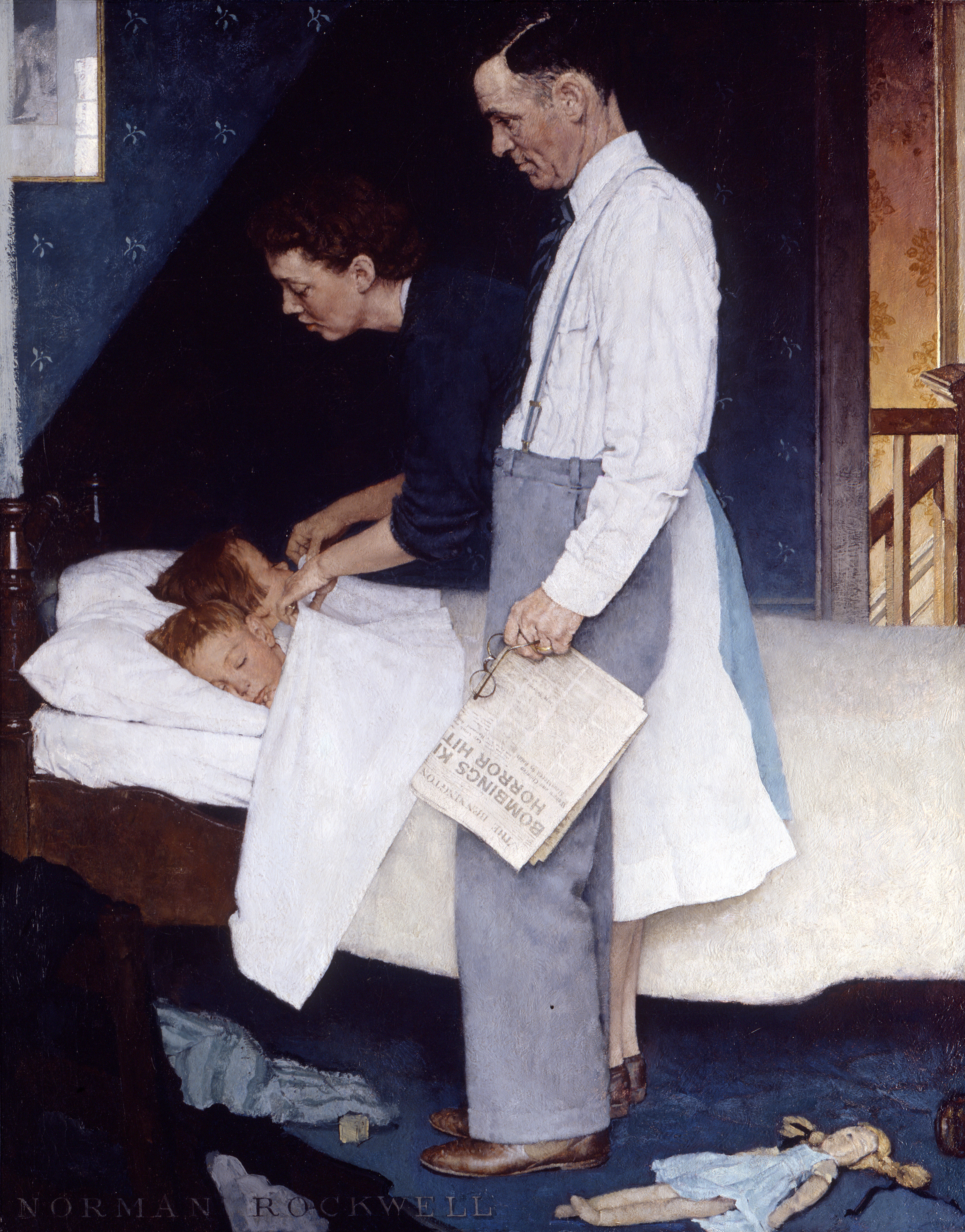Reimagining the Four Freedoms
Overview:
Students reflect on the significant factors of freedom in today’s society, locally and in the world at large. They create an illustration reflecting a select freedom in today’s world. In addition, they write an argument defending the freedom their illustration reflects. The argument defend their argument with relevant facts and data. This project may be a collaborative work with the art teacher.
The written part of the activity will take a week or less to complete. The amount of time to create the illustration may vary depending on whether it is worked on outside of art classes.
Enduring Understandings/ Essential Questions:
- The Four Freedoms are intended for all citizens of the world.
- President Roosevelt named the Four Freedoms as Freedom from Want, Freedom from Fear, Freedom of Worship, And Freedom of Speech.
- The Four Freedoms are reflected in our lives.
- Are the four freedoms named by President Roosevelt relevant today?
- How are the Four Freedoms reflected in your life?
- Do all citizens of the world enjoy these freedoms in the same way?
- What does “freedom” mean to you?
- Grade
- 6-8
- Theme
- Four Freedoms
- Length
- This activity could take a week or less.
- Discipline
- Social Studies; Language Arts:Reading History; Language Arts: Writing History and Science
- Vocabulary
- Argument
Objectives:
- Students will reflect on the world today, identify relevant freedoms and create an image which illustrates a chosen freedom.
- Students will write an argument defending the freedom illustrated in their illustration.
Background:
World War II began in 1939. The United States was not involved in the beginning of the war, however, President Franklin Roosevelt believed that the United States would eventually need to play a larger role. In January 1941, he made his speech to Congress. In his speech, President Roosevelt named the Four Freedoms, which he stated are the rights of everyone in the world. After the speech, in an effort to convey the underlying message of the Four Freedoms, the President reached out to the art world for help. Many artists created works to reflect the meaning of these freedoms in the form of paintings, sculptures, prints, musical compositions, and more. Norman Rockwell thought a lot about these ideals. In February and March of 1943, his completed Four Freedoms illustrations were published in The Saturday Evening Post, each along with a related essay. Exceedingly popular at the time and distributed widely as prints and posters, Norman Rockwell's illustrations raised over 132 million dollars toward the war effort through the purchase of war bonds. Prints of Rockwell’s Four Freedoms were given as premiums when people purchased war bonds in varying denominations. His illustrations became the face of the Four Freedoms and they continue to represent the meaning of these freedoms today.
Multimedia Resources
Freedom of Speech
Freedom of Worship
Freedom from Want
Freedom from Fear
Norman Rockwell's Four Freedoms
Norman Rockwell Museum
Franklin D. Roosevelt's Four Freedoms
Norman Rockwell Museum
Franklin D. Roosevelt's Four Freedoms Speech
FDR Presidential Library and Museum/National Archives
Speeches of Freedom - Voice Collage
Norman Rockwell Museum/Academy of Art University
Additional Resources
- Rockwell, Roosevelt & the Four Freedoms Exhibition Website
RockwellFourFreedoms.org - Saturday Evening Post: February 10, 1943 (Complete Issue) - Freedom of Speech
- Four Freedoms - Presentation
- Speeches of Freedom: Voice Collage (PDF)
- Eleanor Roosevelt – The Struggle for Human Rights (excerpt) (PDF)
- W.E.B. DuBois - Niagara Movement Speech (excerpt) (PDF)
- Franklin D. Roosevelt - “The Four Freedoms” Speech (excerpt) (PDF)
- Lyndon B. Johnson - “Great Society” Speech (excerpt) (PDF)
- Malcolm X - Speech to Peace Corps Workers (excerpt) (PDF)
- Ang San Suu Kyi - Freedom from Fear (excerpt) (PDF)
- Elie Wiesel - "Perils of Indifference" - Nobel Peace Prize Speech (excerpt) (PDF)
- Martin Luther King - "I have a dream" Speech (excerpt) (PDF)
- Margaret Chase Smith - "Declaration of Conscience" (excerpt) (PDF)
- Lyndon B. Johnson - "The American Promise" Speech (excerpt) (PDF)
- John F. Kennedy - Inaugural Presidential Address (excerpt) (PDF)
- Cesar Chavez - "Wrath of Grapes Speech" (excerpt) (PDF)
- Abraham Lincoln - "Gettysberg Address" (complete) (PDF)
- Winston Churchill - "Blood, Sweat and Tears" Speech (complete) (PDF)
- Norman Rockwell Museum Mobile App
Classroom Supplies:
- Internet access for research
- Art materials for illustration
- Paper/writing implements
- Chart paper and marker
Activities:
- Prior to this project give students the opportunity to view and discuss the four freedoms illustrated by Norman Rockwell and the world events which led to the speech given by Franklin D. Roosevelt.
- Hold an informal discussion of the freedoms relevant to today’s world affairs. Record ideas elicited from students.
- Students will think about the ideas recorded. From the list or an additional ideas that they have, students will choose a freedom to illustrate and defend.
- If working in collaboration with the art teacher, students may make preliminary sketches in class and work on final illustration in art class.
- Students will research facts and data in support of the selected idea. They will publish an argument defending the selected freedom based on present world events and conditions which will serve as the placard to be displayed with the illustration.
- If students have not had previous experience writing arguments, mentor texts should be shared and analyzed, noting how this type of writing is different from other genres.
Assessment
- Are students’ ideas relevant to today?
- Do the illustrations reflect ideas?
- Do students’ arguments provide evidence supporting the ideas based on today’s world?
Standards
This curriculum meets the standards listed below. Look for more details on these standards please visit: ELA and Math Standards, Social Studies Standards, Visual Arts Standards.
- CCSS.ELA-Literacy.RH.6-8.1
- Cite specific textual evidence to support analysis of primary and secondary sources.
- CCSS.ELA-Literacy.WHST.6-8.1
- Write arguments focused on discipline-specific content.
- CCSS.ELA-Literacy.WHST.6-8.7
- Conduct short research projects to answer a question (including a self-generated question), drawing on several sources and generating additional related, focused questions that allow for multiple avenues of exploration.
- CCSS.ELA-Literacy.WHST.6-8.9
- Draw evidence from informational texts to support analysis, reflection, and research.
- D1.1.6-8.
- Explain how a question represents key ideas in the field.
- D1.4.6-8.
- Explain how the relationship between supporting questions and compelling questions is mutually reinforcing.
- D2.Civ.1.6-8.
- Distinguish the powers and responsibilities of citizens, political parties, interest groups and the media in a variety of governmental and nongovernmental contexts.
- D2.Eco.2.6-8.
- Evaluate alternative approaches or solutions to current economic issues in terms of benefits and costs for different groups and society as a whole.
- D2.Geo.4.6-8.
- Explain how cultural patterns and economic decisions influence environments and the daily lives of people in both nearby and distant places.
- D2.His.2.6-8.
- Classify series of historical events and developments as examples of change and/or continuity.
- D3.1.6-8.
- Gather relevant information from multiple sources while using the origin, authority, structure, context, and corroborative value of the sources to guide the selection.
- D3.2.6-8.
- Evaluate the credibility of a source by determining its relevance and intended use.
- D4.1.6-8.
- Construct an argument using claims and evidence from multiple sources, while acknowledging the strengths and limitations of the argument.
- D4.2.6-8.
- Construct explanations using reasoning, correct sequence, examples, and details with relevant information and data, while acknowledging the strengths, and weaknesses of explanations.
- D4.3.6-8.
- Present a summary of arguments and explanations on topics of interest to others to reach audiences and venues outside the classroom using print and oral technologies (e.g., posters, essays, letters, debates, speeches, reports, and maps) and digital technologies (e.g., Internet, social media, and digital documentary).



